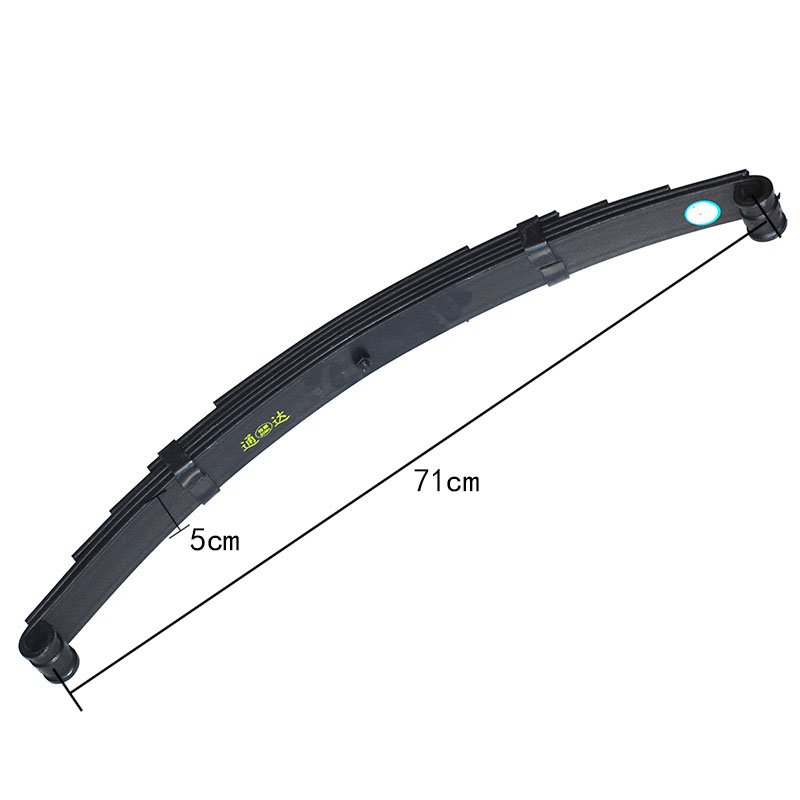In the bustling streets of our daily lives, the humble rickshaw often goes unnoticed, serving as a mode of transportation for many. However, beneath its seemingly simple exterior lies a mechanical marvel that few take the time to appreciate – the leaf spring, also known as the bow plate. It’s a revelation to discover that this seemingly ordinary component has a multitude of functions beyond mere suspension!

The leaf spring, typically made of layered steel springs, forms the backbone of a rickshaw’s suspension system. Its primary role is to absorb shock and provide a smooth ride over uneven surfaces. But its versatility does not end there. Let’s delve into the surprising uses of this unsung hero of the rickshaw world.
Firstly, the leaf spring acts as a critical shock absorber. When the rickshaw traverses bumpy roads or potholes, the leaf spring compresses and expands, distributing the impact force evenly across its length. This prevents sudden jolts to the passengers, ensuring a comfortable ride. Imagine the discomfort if this vital component were absent – every small bump would be felt as a harsh jolt, making the journey unbearable.
Secondly, the leaf spring plays a significant role in maintaining the rickshaw’s structural integrity. It acts as a stabilizer, preventing excessive rolling or swaying, especially when cornering or navigating steep hills. This stability is crucial for the safety of both the passengers and the driver, ensuring that the rickshaw remains steady and in control.
But the surprises don’t stop here. The leaf spring’s design also incorporates a clever feature known as “progressive rate.” This means that as the spring compresses further under heavier loads, it becomes stiffer, providing increased resistance to bottoming out. This adaptability ensures that the rickshaw can carry varying loads without compromising its suspension performance.
Moreover, the leaf spring is a testament to the ingenuity of simple yet effective engineering. Its durability is remarkable; it can withstand years of constant use and abuse without significant wear and tear. This robustness makes it a cost-effective solution, reducing the need for frequent replacements and maintenance.
In some rural areas, the leaf spring’s versatility even extends beyond the rickshaw itself. Creative individuals have repurposed old leaf springs for various tasks, such as making tools, simple furniture, or even as a source of metal for other repairs. This reuse highlights the material’s versatility and the ingenuity of those who find value in every part of a machine.
In conclusion, the leaf spring on a rickshaw is more than just a suspension component; it’s a marvel of engineering that embodies durability, adaptability, and simplicity. Its ability to provide a smooth ride, maintain structural stability, and adapt to varying loads makes it a vital part of the rickshaw’s design. And its potential for repurposing underscores its value beyond the vehicle it supports. So, next time you see a rickshaw gliding down the street, take a moment to appreciate the silent hero beneath it – the versatile leaf spring.
